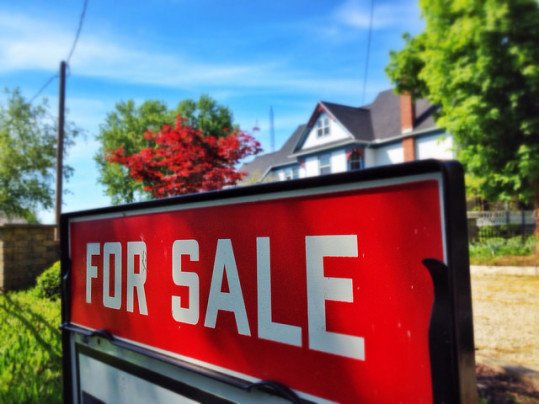There’s been a lot of talk about first-time home buyers this year. That’s primarily due to the fact that, following the financial crisis, first timers were less active in the market than usual. Because of this, a lot of attention has been focused on their return and what it means for housing overall. But, according to the National Association of Home Builders’ 55+ Housing Market Index, there is positive momentum in the market among older buyers as well. In fact, the index – which measures builders’ confidence in the new home market among buyers 55 and older – remained in positive territory for the second quarter of 2015, registering a 57 on a scale where any number above 50 means more builders felt the market was good than poor. Timothy McCarthy, chairman of NAHB’s 55+ Housing Industry Council, said the index has come down a bit but it’s no cause for concern. “Although builder confidence in the 55+ housing sector is down slightly from its peak, builders are still optimistic about the market going forward,” McCarthy said. “According to our survey, one area in particular that’s improved recently is the condo market, and we expect this momentum to continue.” Among the index’s individual components, expectations for condo sales over the next six months saw the biggest gains, rising 10 points from the previous quarter. More here.
Archive for August 2015
Americans Say They’d Rather Buy Than Rent
Each month, Fannie Mae’s National Housing Survey polls Americans to assess their attitudes toward owning and renting a home, home price changes, the economy, household finances, and overall consumer confidence. In July, the survey found respondents slightly less optimistic than the month before. But despite the dip in confidence, the vast majority of participants still said they’d prefer to buy a home rather than rent if they were to move today. In fact, 65 percent said they’d buy if they were going to move, while just 28 percent said they would rent. Doug Duncan, Fannie Mae’s senior vice president and chief economist, said the residential real estate market remains strong. “It is premature to read too much into this month’s results as the survey was taken around the time of increased global turmoil, including Greece’s potential default and China’s stock market plunge, which has receded somewhat. Most of our key indicators are as strong or stronger than they were at this time last year, which is indicative of an improving housing market this year.” Also among the results, 61 percent of Americans believe now is a good time to buy a house, while 45 percent say it is a good time to sell. More here.
What Makes A Buyer Choose A Particular Home?
When it comes to home buyer preference, there are a lot of variables. Some people buy according to price, while others are looking for a particular neighborhood or style of home. A recent analysis of the Department of Housing and Urban Development’s American Housing Survey done by the National Association of Home Builders looked at what’s most important to buyers of both new and existing homes. According to the report, the top two reasons a buyer chooses a particular home are size and layout/design. In fact, 76 percent of buyers named size the most important factor and 74 percent said layout. Neighborhood came in third at 72 percent of buyers. New home buyers named similar features but added exterior appearance and construction quality to their list of deciding factors. They were also even more likely to name these features as important than buyers of previously owned homes. Among first-time buyers, the home’s price was a bigger factor than among other buyers. First timers were also more likely to look for a neighborhood that was close to work, family, and friends. Other buyers said the neighborhood they moved to would be based primarily on the house they were interested in and safety. To a lesser extent, potential home buyers were interested in buying in a good school district, though that tended to be more important to new home buyers than other types of buyers. More here.
Mortgage Demand Rises As Rates Fall
According to the Mortgage Bankers Association’s Weekly Applications Survey, demand for mortgage applications rose 4.7 percent last week from the week before. The increase included a 6 percent jump in the Refinance Index and a 3 percent improvement in the number of people seeking applications for loans to buy homes. Purchase application demand – which is a good indicator of future home sales – is now 23 percent higher than it was the same week one year ago. The increase in activity was a needed boost after consecutive weeks when demand for mortgage applications was relatively flat. Lynn Fisher, MBA’s vice president of research and economics, said the gains were due to average mortgage rates falling last week. “Despite recent concerns about the economy, both purchase and refinance applications increased strongly in response to lower interest rates last week,” Fisher said. “Refinance activity was the highest since May when rates were last at this level. The increase in purchase activity was also notable for this time of year, up 23 percent relative to a year ago.” The MBA’s weekly survey has been conducted since 1990 and covers 75 percent of all retail residential mortgages. More here.
Real Estate Named Best Long Term Investment
Nearly 30 percent of surveyed Americans named real estate the best investment for money they wouldn’t need for at least a decade, according to a new survey from Bankrate. Real estate beat out cash, bonds, and the stock market and took the top spot for the first time in the survey’s three-year history. Along with a Gallup poll released in April, it marks the second time this year Americans said they trusted the housing market most with their money. It is also an indication that – following many years when the housing crash seemed to damage real estate’s reputation as a safe bet – Americans are, once again, eager to get into the market. Part of the reason for this has to do with favorable buying conditions, including mortgage rates still below historic norms. It also has to do with the fact that home values are seen as more stable – compared, for example, to the daily fluctuations of the stock market. In addition, real estate benefits from being a tangible commodity, which gives it an aura of security stocks and bonds can’t match. Whatever the reason, Americans’ perception of the housing market is clearly on the rebound. More here.
Number Of Underwater Mortgages Falling Fast
The number of homeowners who owed more on their mortgage than their home was worth hit a peak of 15 million in 2010. Known as having negative equity or being “underwater,” homeowners in this position are often left with limited options until prices rise and, once again, lift them above water. So, a recent report from Black Knight Financial Services showing that there has been a 26 percent decline in the number of underwater borrowers through the first five months of this year is undeniably good news. It means home values have largely returned after dropping significantly following the financial crisis. It also means approximately one million homeowners can begin building equity again or, if they choose, can put their home up for sale. With this year’s drop, there are just 3 million homeowners nationwide that remain underwater, down nearly 80 percent from its peak. The decrease also beat the pace of last year’s decline over the same period, when the number of underwater homeowners fell by 20 percent. More here.
Real Estate Markets Improved In 95% Of Metros
The most recent results of Freddie Mac’s Monthly Multi-Indicator Market Index – which monitors several key indicators to gauge the health of local housing markets across the country – found that 43 of 50 states and 95 of the top 100 metro areas are showing an improving three-month trend. Overall, the housing market has a way to go before it matches its previous index high but a closer look at the numbers finds individual markets across the country registering improvement. Len Kiefer, Freddie Mac’s deputy chief economist, said the index continues to deliver good news. “It’s becoming clearer every month that after several years of local trends largely reflecting national trends, we are getting back to more normal times where local housing markets develop based on their own unique economies,” Kiefer said. “For example, housing markets in the West and Southwest continue to be the bright spot of the recovery and spring home buying season with strong purchase activity fueled by an improving local economy and job picture. Yet, even within these regions, MiMi shows noticeable difference.” More here.







